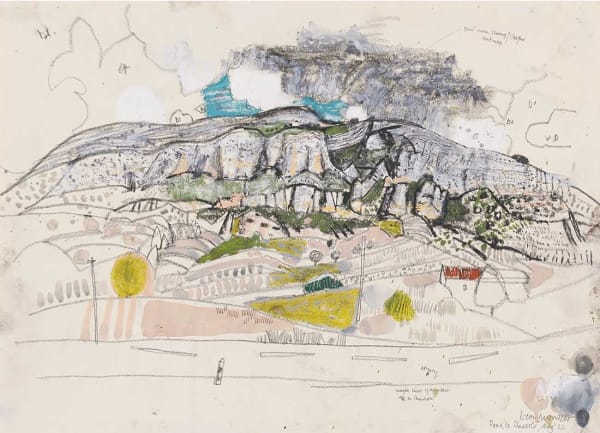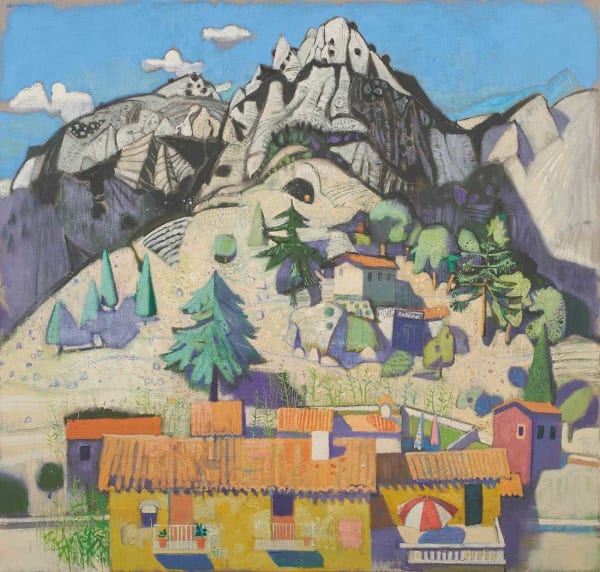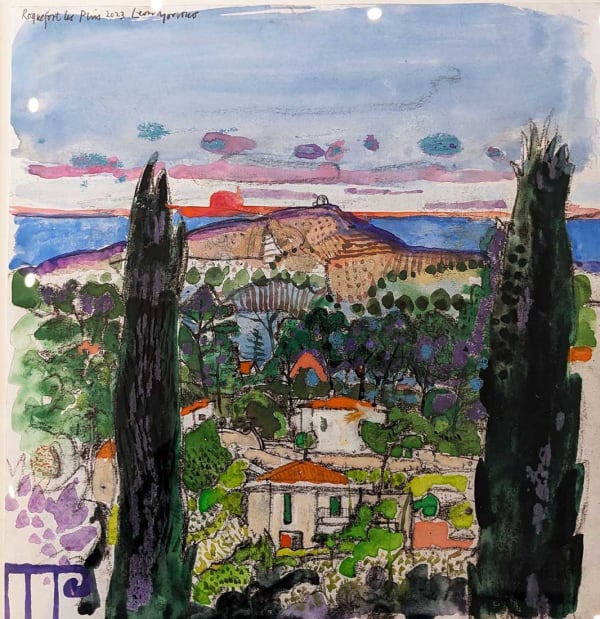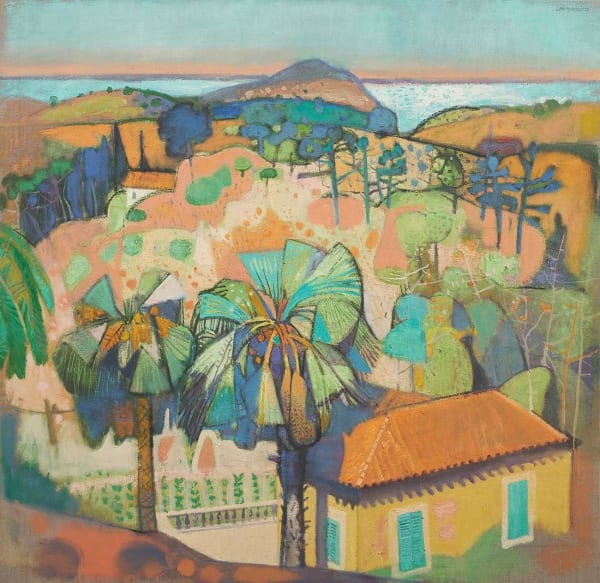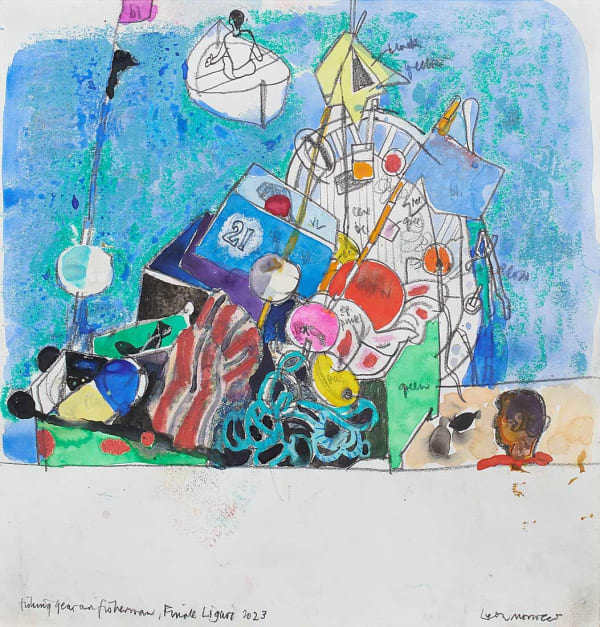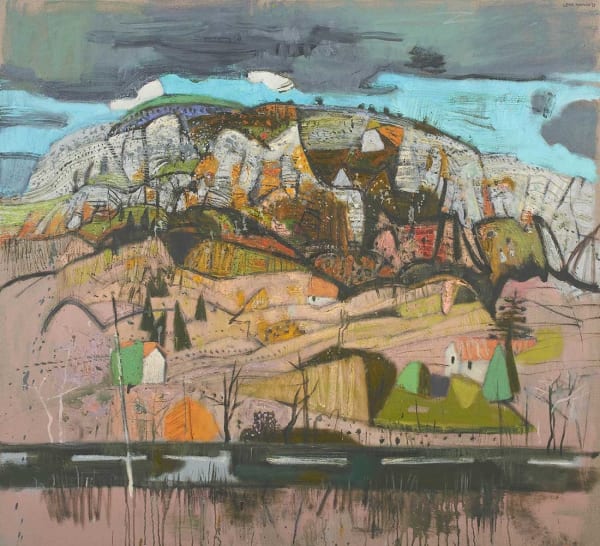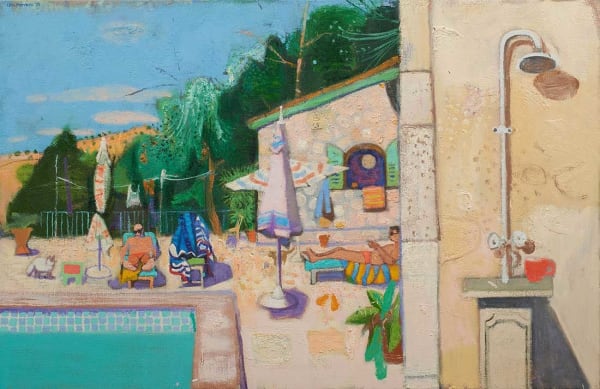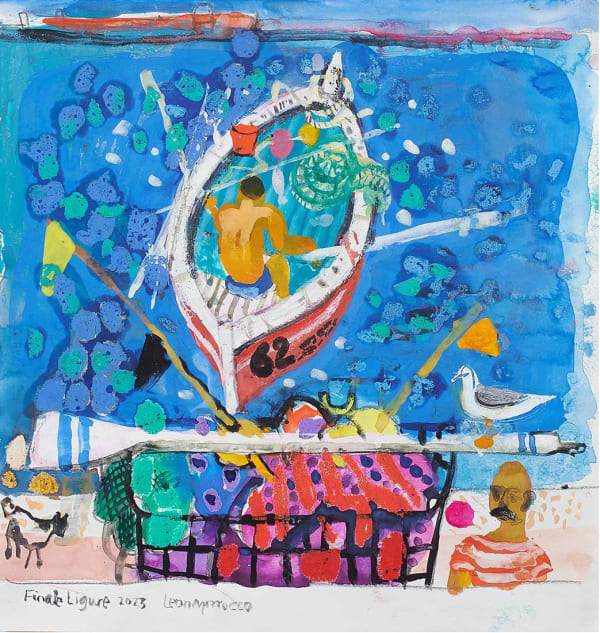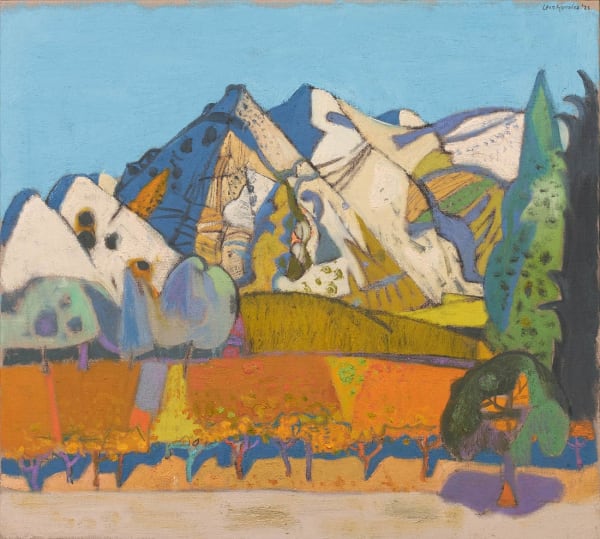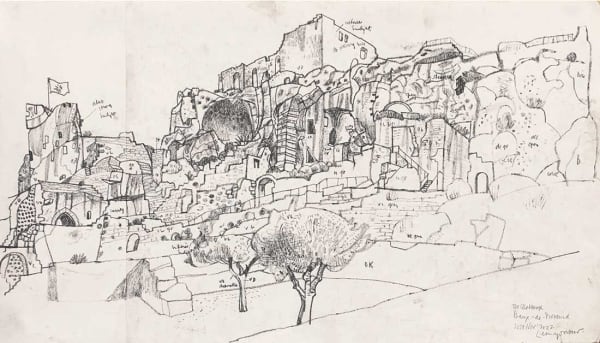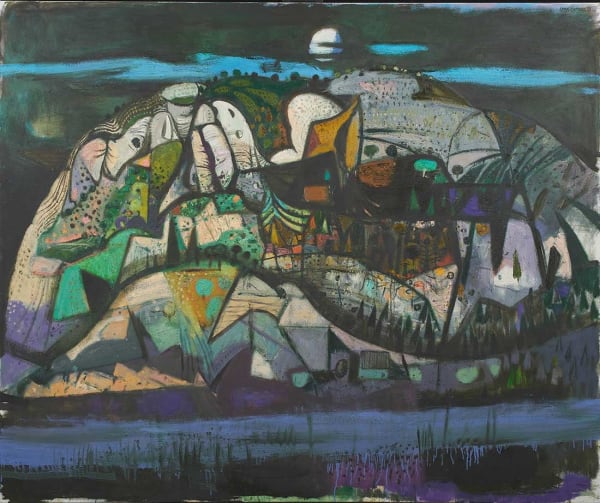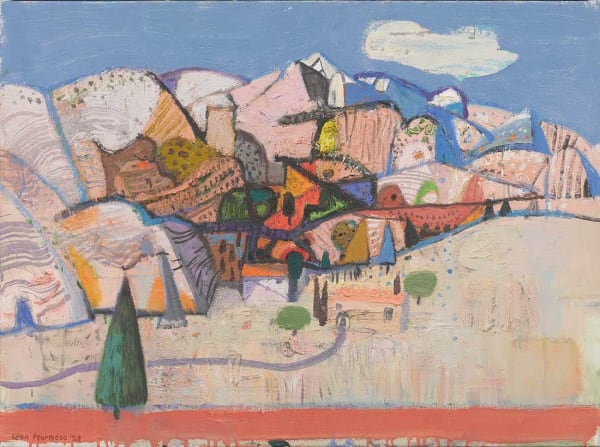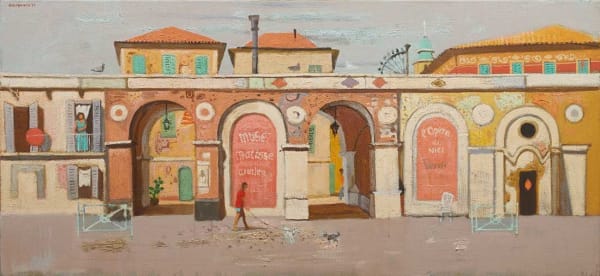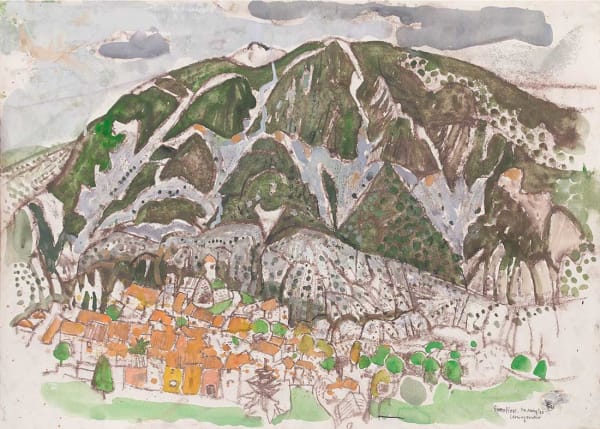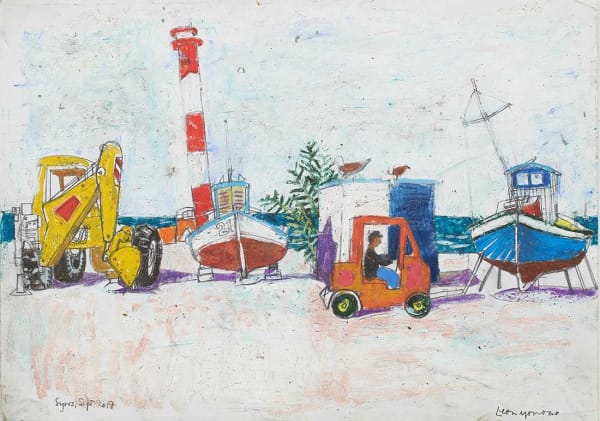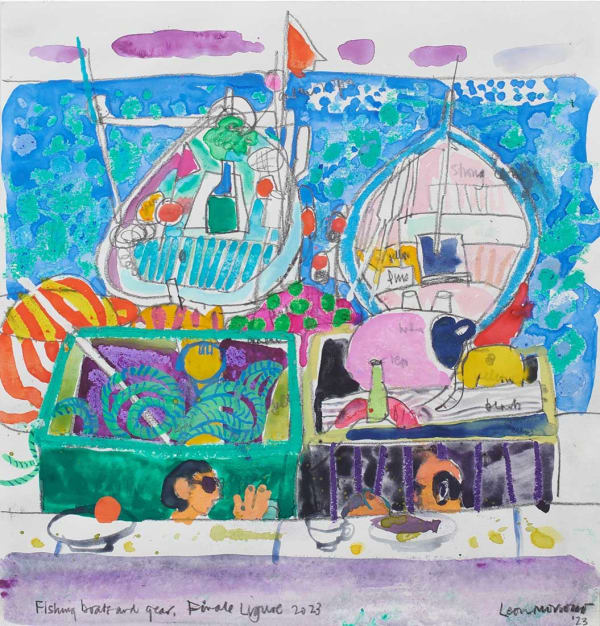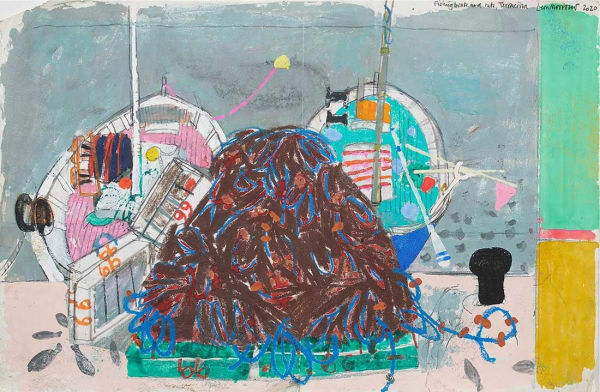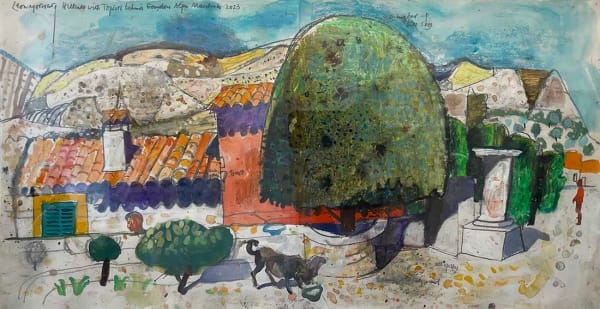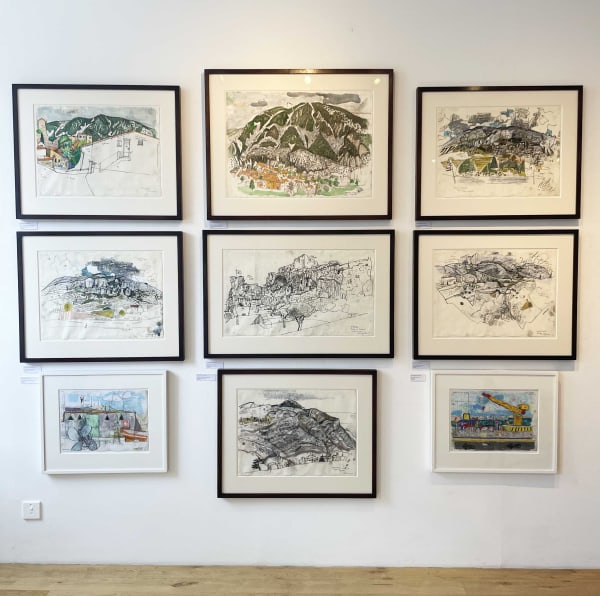Leon Morrocco RSA RGI : Terre et Mer
"I remember the day vividly.....the sheer drama and monumentality of the mountains bowled me over. Their characteristic form... long horizontal, rocky escarpments of warm light grey stone immediately appealed to me and the urge to do something with it, certainly to draw it, was strong from the outset."
Leon Morrocco RSA RGI presents a new body of work from his studio in the South of France, which takes us from the heights of the Alpes-Maritimes to the streets and beachfronts of Nice. Exploring Morrocco's recent fascination with the natural landscape, Terre et Mer contrasts the architectural rigidity of the city with his newly discovered affinity with the mountainous terrain that lies behind it. Continuing Morrocco's affection with the Mediterranean, this exhibition captures the warmth of the southern European lifestyle, and the calming beauty of its sea and mountainscapes, "I'm drawn to the sun, drawn to what it does to form, I like shadows, I like to have the form accentuated through light…I always go South."
Leon Morrocco RSA RGI, in conversation, April 2024
On a visit to a family home in Roquefort-les-Pins near Nice in 2019 Morocco was taken on a trip into the nearby mountains. "I remember the day vividly.....the sheer drama and monumentality of the mountains bowled me over. Their characteristic form... long horizontal, rocky escarpments of warm light grey stone immediately appealed to me and the urge to do something with it, certainly to draw it, was strong from the outset. That first day led to a three year period where I immersed myself in the forms and structures of the of the Alpes-Maritimes and which led to some 30 very large paintings. It was so quiet up there...total silence. The mountains are very volcanic and were obviously the result of tremendous geological turmoil...I was often sitting drawing on volcanic lava, the rocks around me pitted with blowholes and you realise "my God, that's lava that flowed down this hill millions of years ago."
It was another dimension to being up there. It was exciting to be using shapes and forms derived from the rock formations...it was looser and freer...it freed me up. The process of painting became more open-ended, and I felt able to change quite a lot without diverging from the subject-matter...I felt I was adding to it and able to interpret my preparatory drawings rather than copy them.
After this three year period up in the hills I moved down into the city of Nice. In comparison to the mountains the visual problems were totally different and immediately evident…everything was man-made, rigid and architectural and I couldn't think of how to deal with it at first, so as usual I set about doing lots of drawing in order to feel my way, hopefully towards a point of view...I really did a lot of drawing before attempting to paint.
I never paint directly on the spot...I don't paint outside and that was something we were taught at ECA, we had a day where we were allowed to go out and draw in the city and we did compositions from those drawings, and that got me into the way of preparatory, and looking at things, not just for what they were in front of me, but thinking about how you would translate that into painting in the studio. This is where the interesting things happen, you're making decisions you wouldn't make on the spot, you're responding to what you think is interesting…It's the kernel of the idea, the drawings, when you take them back into the studio."




